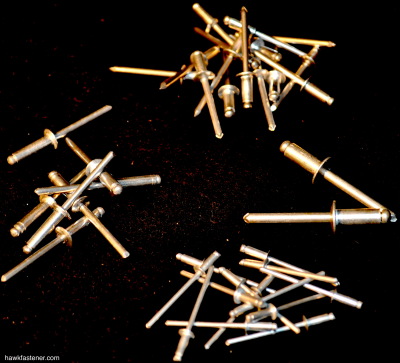Blind Rivets
Over 3000 BC rivets have been around. Where they, first of all, they appeared in Egypt, where wooden rivets were utilized to produce a variety of tools.
Sometimes after that, the wooden rivets were used as fasteners in Gaul (France) while it was under the instructions of the Roman Empire.
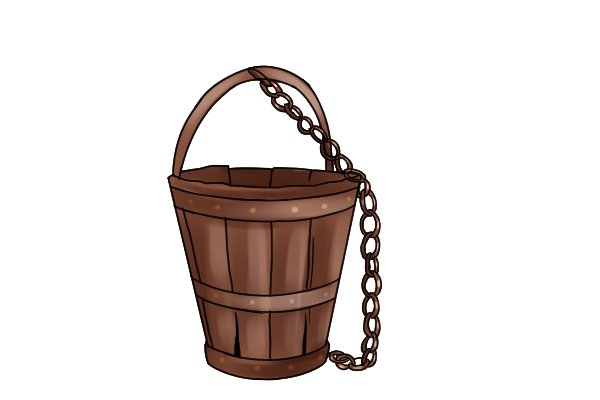
Whereas in the 7th and 8th centuries the Vikings installed planking on their boats using wooden rivets.
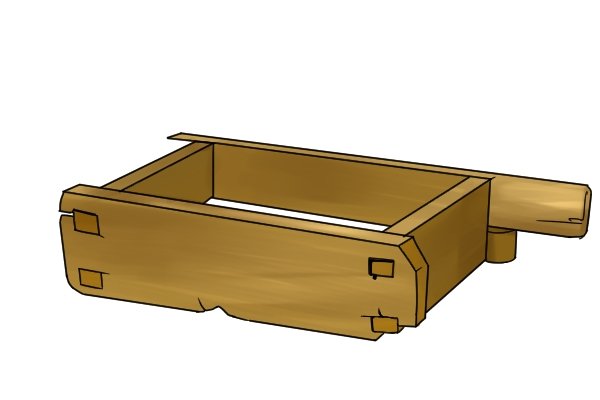
From 1840-1930 the use of rivets evolved, and so did the materials that could be fastened. Wooden constructions were widely used and joined with rivets, but the large thickness of parts being fastened resulted in structural disadvantages: for example the risk of rivets splitting made structures unreliable.
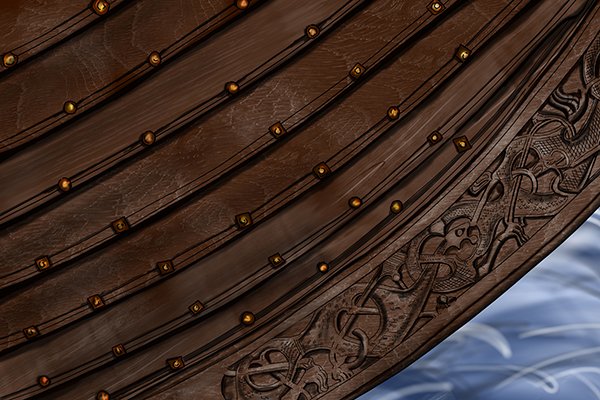
During the start of the 19th century, there was a breakthrough in the iron and steel industry which helped overcome the unreliability of wooden rivets. Wrought iron and steel, with their ductile behavior.
Ductile behavior means the ability to deform iron and steel to produce metal rivets.
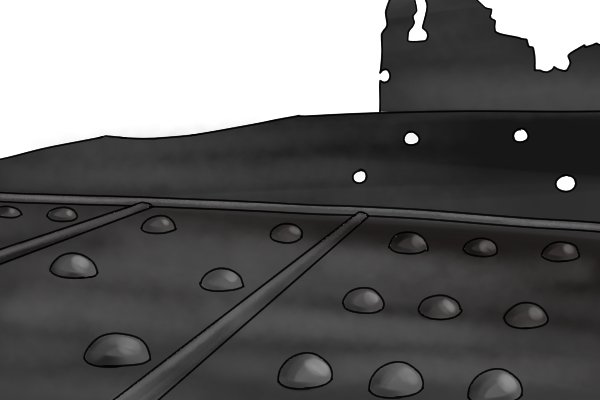
A number of other methods have surfaced since then. However, rivets are still commonly used today to fasten materials together.
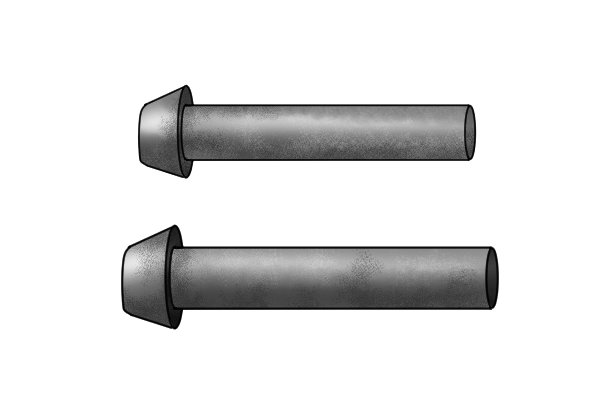
Blind rivets, also usually referred to as POP Rivets, are mainly used in applications where there is no access to the rear (blindside) of the joint.
Rivet pin
The pin is the main body of the rivet which will slot through the pieces of material being joined together.
Rivethead
The rivet head acts as a stopper on one side of the fixed materials.
The head will sit on the outside of the material to stop the rivet from sliding out of the material.
Rivet mandrel
The mandrel is slotted into the rivet gun when being fastened. The rivet gun pulls the mandrel part-way through the pin (body) of the rivet.
Rivet mandrel head
The mandrel head expands the body of the rivet then leaves itself buried inside the rivet, creating a second head to secure and fasten the pieces being joined.
How does a blind rivet work?
The mandrel is pulled through the body of the rivet using a riveter, or rivet gun.
Closing the handles of the riveter pulls the mandrel head into the body of the rivet with great force, causing the part of the body on the “blind” side of the joint to bulge outwards, effectively and efficiently locking the rivet in place.

As soon as the mandrel head moves closer to the surface of the material it functions expanding the body of the rivet.
Once the mandrel cannot be pulled any further, the force present in it causes the mandrel to crack.
What are the different types of blind rivet?
A blind rivet, sometimes also known as a pop rivet, has a (hollow cylindrical) pin (body) which is attached to ahead. A mandrel – a long, narrow pin with a head – goes through the hollow of the body.
Blind rivets are nowadays available with different styles of bodies and heads. They are manufactured from a range of materials.
Standard Blind Rivets
Standard blind rivets are mainly utilized to fasten the metal to metal. Which usually consists of domed heads and plain bodies. Pulling the mandrel part-way through the rivet’s body while it expands the body at its “blind” end.
Standard rivets are mainly used in a wide range of industries including for illustration: automotive, construction, metals, electrical appliances, containers, furniture, air conditioning, and heating.
Like the other types of the mandrel, the head does not extend from the end of the rivet – it is contained within the sealed body. Sealed rivets do not allow liquids to get in or out and are usually designed to fasten metal to metal.
While the head of the rivet is sealed the heads of the mandrel sit inside the body of the rivet as this usually prevents any liquid from getting in or out of the component.
Providing a locking head with a larger diameter, ensuring them with a greater bearing surface (underside of head) is known as peeled rivets. The body expands, leaving ahead in the shape of a flower with four petals as the mandrel is drawn through.
Peeled rivets are ideally for use in the automotive industry, construction work (plasterboard, coatings, and insulation) and can be used on as trailers, plastic components, electrical appliances, and upholstery.
http://blog.indiafasteners.com/pop-rivets/
Grooved Blind Rivets
This type of rivet comes along with grooves around the body which provides the rivet with excellent gripping power when installing softer materials such as plastic and wood.
Just like a screw, the grooves are situated around the body of the rivet embed into which holds the material together almost just like a screw.
Rather than a new head is created on the other side of the material, the tail of a grooved rivet expands inside the material when the mandrel is pulled out.
Grooved rivets are appropriately suited for utilization in construction, the metal industry and furniture manufacturing, and in electrical equipment and injection-molded components.
Multi-Grip Blind Rivets
Multi-grip rivets are almost identical to standard rivets but have indents located on the rivet body.
Multi-grip rivets are mostly suitable for avail in the automotive, construction and metal industries, and in electrical appliances, furniture, electronics, ladder manufacturing, and air conditioning and heating.
Soft Set Blind Rivets
Standard rivets that are identical to soft rivets. The mandrel breaks off with much less force than various types of the rivet so it induces the right amount of force to speed up brittle materials without them becoming deterred.
Utilization for these rivets is of use when fastening when comes to metal to plastic, metal to wood, metal to fiberglass, plastic to plastic and metal or plastic to soft materials with low refusal.
Blind Rivets Heads
As well as being available in numerous body designs, blind rivets can also have distinct types of head.
Dome Head Blind Rivets
This also furnishes much more bearing on the surface for it to be used to fasten a variety of materials.
This is due to the reason this type of head which applies more pressure closer to the hole that has been drilled which can destroy softer materials.
Large Head Blind Rivets
As it provides huge resistance and is ideal for fastening brittle or soft materials to rigid assist materials.
Countersunk Head Blind Rivets
This fits into the material stiff leaving the head expanding, with keeping a flat surface.
What Blind Rivet Sizes are Available?
Blind riveters are assembled up of a mandrel, a cylindrical body, and ahead. They are also used as a permanent fastener for materials combining two or more pieces together.
They are measured by their diameter and length.
The diameter is not the actual rivet diameter: it belongs to the measurement of the drill bit necessary to produce a hole to acquire the rivet.
Blind rivets are utilized in riveters (also known as rivet guns) which induct the blind rivets to attach two different materials together.
Available Blind Rivet Sizes
The diameter sizes which are available for blind rivets are:
Metric series – 2.4, 3, 3.2, 4, 4.8, 5, 6.4 and 7.4mm.
Inch series – 3/32, 1/8, 5/32, 3/16, 1/4 and 19/64″.
The available metric series lengths for blind rivets are:
4, 4.5, 5, 6, 7, 8, 10, 12, 14, 16, 18, 22, 35, 40, 45, 50, 55, 60, 65, 70, 75, 80, 90, 100, 110, 120, 130, 140, 150, 160, 170, 175, 180 and 190mm.
Inch series lengths include:
5/32, 3/16, 7/32, 1/4, 9/32, 5/16, 11/32, 3/8, 7/16, 1/2, 9/16, 5/8, 3/4, 13/16, 7/8, 15/16, 1, 1 3/4, 2, 2 3/16, 2 3/8, 2 5/8, 2 3/4, 3, 3 1/8, 3 1/2, 4, 4 1/2, 4 3/4, 5 1/4, 5 1/2, 6, 6 11/32, 6 3/4, 7, 7 1/4 and 7 1/2″.
Grip Range of Blind Rivets
This is the measurement of thicknesses that a rivet can grasp in together. This is always lesser than the length of the rivet’s body as it has to take into account the loss of length caused by the improper formation of one end of the rivet when it is ‘popped’.
While measuring the thickness of the materials you want to join in altogether will give you the overall correct grip range so you can find the length of the rivet you need.
For example, if the material you need to join is 10mm thick, then you will require a rivet length of 14mm which provides a grip range of around 9-11mm.
The computation of the diameter of solid or blind rivets is the measurement essential to get the correct rivet for the size of the hole you have drilled.
For example, if the hole you have drilled is 5mm then the measurement of the rivet needs to be 4.8mm.
How to install blind rivets
Blind rivets are installed using a riveter, sometimes referred to as a pop riveter or rivet gun.
Step 1 – Clamping material
Hold the pieces of material together, making sure they are in line with each other, with no gaps.
Step 2 – Drilling material
Once the material is clamped and in place, utilized the right sized drill bit, drill through the material to generate a hole for the rivet to slot through.
Step 3 – Placing rivet
Locate the pin of the rivet through the drilled hole so the head and mandrel are uppermost.
Step 4 – Placing riveter
By pushing the nozzle of the riveter onto the mandrel of the rivet.
Step 5 – Using a rivet gun
By Squeezing the handles of the riveter together. This will pull the head of the mandrel into the rivet, causing the end of the rivet to expand
What are Blind Rivets?
A permanent mechanical fastener is named as a blind rivet. Composed of a smooth cylindrical handle before being installed, consisting of a head-on one end. In other words, strike creates a new “head” on the other end by smashing the “tail” material flatter, resulting in a rivet that is roughly a dumbbell shape. Fastenings used in traditional wooden boat building, such as copper nails and clinch bolts, work on the same principle as the rivet but were in use long before the term rivet was proposed.
Types
There are numerous types of rivets, designed to meet different cost, accessibility, and strength requirements:
Solid/round head rivets
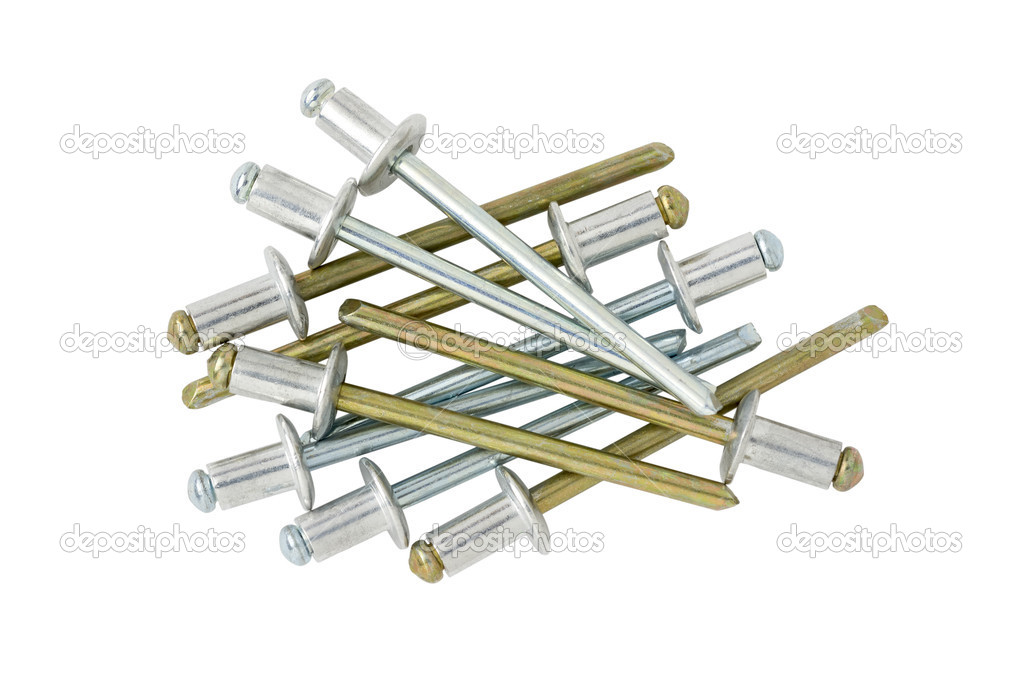
These are the oldest and most dependable types of fasteners. Having been found in archaeological findings tracings back to the Bronze Age. It consists mainly of a handle and head that are improperly formed with a hammer or rivet gun. A rivet compression tool doesn’t require two people and is generally the most foolproof way to induct solid rivets.
Solid rivets are mainly adopted in operations where reliability and safety count. Hundreds of thousands of solid rivets are utilized to assemble the frame of a modern aircraft. The aircraft, Typical material rivets are aluminum alloys (2017, 2024, 2117, 7050, 5056, 55000, V-65), titanium, and nickel-based alloys (e.g., Monel). “Icebox” aluminum alloy rivets harden with age, and must likewise be hardened and then kept at sub-freezing temperatures (therefore the name “icebox”) to slow the age-hardening process.
Whereas the fixture of these fasteners craves a connection to both sides of an arrangement. Solid rivets are operate using a hydraulically, pneumatically, or electromagnetically actuated squeezing tool or even a handheld hammer.
Solid rivets are also used by some artisans in the construction of modern recreation of medieval armor, and metal couture.
High-strength structural steel rivets
Until relatively recently, structural steel relations were either welded or riveted. The reason for the change is principally due to the expense of skilled workers required to install high strength structural steel rivets.
At a central location near the areas being riveted, a heater was set up. Rivets were placed in the heater and heated to glowing hot (often to white-hot) so that they were more hammered and easily unproperly formed. The catcher (usually) captured the rivet in a wooden bucket with an ash-lined bottom. The catcher inserted the rivet into the hole to be riveted, then quickly turned to catch the next rivet. Simultaneously, the buck is hammered more or less flush with the structure in an embedded hole. Before the use of pneumatic hammers, e.g. in the construction of RMS Titanic, the man who hammered the rivet was known as the “basher”.
The last commonly used high strength structural steel rivets were designated ASTM A502 Grade 1 rivets.
Such riveted structures may be inadequate to withstand seismic loading from earthquakes if the structure was not engineered for such forces, a common problem of older steel bridges. In the seismic retrofit of such structures, it is common practice to remove critical rivets with an oxygen torch, condition ream the hole, then insert a machined and heat-treated bolt
Semi-tubular rivets
Semi-tubular rivets (also known as tubular rivets) are similar to solid rivets, leaving they have a partial hole (opposite the head) at the tip. The motive of this hole is to reduce the amount of force needed for application by rolling the tubular portion outward. Typical installation tools (from lowest to highest price) are handset, manual squeezer, pneumatic squeezer, kick press, impact riveter, and finally PLC-controlled robotics. They are offered from 1/16-inch (1.6 mm) to 3/8-inch (9.5 mm) in diameter (other sizes are considered highly special) and can be up to 8 inches (203 mm) long. A wide variety of materials and platings are available, most common base metals are steel, brass, copper, stainless, aluminum and most common platings are zinc, nickel, brass, tin.
Blind rivets
Blind rivets, frequently mentioned to as “pop” rivets (POP is the brand name of the original manufacturer, now owned by Stanley Engineered Fastening, a division of Stanley Black & Decker) are tubular and are supplied with a nail-like mandrel through the center which has a “necked” or weakened area near the head. The compression force between the head of the mandrel and the tool expands the diameter of the tube throughout its length, locking the sheets being fastened if the hole was the correct size. At a predetermined tension, the mandrel breaks at the necked location. With open tubular rivets, the head of the mandrel may or may not remain implanted in the expanded portion of the rivet, and can come loose at a later time.
Before the creation of blind rivets, the implantation of a rivet typically required access to both sides of the assembly: a rivet hammer on one side and a bucking bar on the other side. Whereas In 1916, Royal Navy confidential and engineer Hamilton Neil Wylie lodged a patent for an “improved means of closing tubular rivets”. In 1922 Wylie go along with the British aircraft manufacturer Armstrong-Whitworth Ltd to provide opinion on metal construction techniques; here he continued to evolve his rivet design with a further 1927 patent that consolidated the pull-through mandrel and allowed the rivet to be used blind. By 1928, the George Tucker Eyelet company produced a “cup” rivet based on the design. Altogether with Armstrong-Whitworth, the Geo. Tucker Co. further modified the rivet design to produce a one-piece unit incorporating mandrel and rivet. This product was later developed in aluminum and trademarked as the “POP” rivet.
Now they are available in flat head, countersunk head, and modified flush head with standard diameters of 1/8, 5/32 and 3/16 inch. Blind rivets are built from soft aluminum alloy, steel (including stainless steel), copper, and Monel.
The rivet body is normally formed using one of three methods:
Both Internally and externally locked structural blind rivets can be utilized in aircraft applications because, unlike other types of blind rivets, the locked mandrels cannot fall out and are watertight. As the mandrel is locked into place, they have the same or greater shear-load-carrying capacity as solid rivets and may be used to replace solid rivets on all but the most critical stressed aircraft structures.
The typical assembly process requires the operator to install the rivet in the nose of the tool by hand and then actuate the tool. However, in recent years automated riveting systems have become more popular in an effort to reduce assembly costs and repetitive disorders.
Whereas the structural blind rivets using a locked mandrel are common, there are also aircraft functions using “non-structural” blind rivets where the reduced, but still predictable, the strength of the rivet without the mandrel is used as the design strength. A method popularized by Chris Heintz of Zenith Aircraft uses a common flat-head (countersunk) rivet which is drawn into a specially machined nosepiece that forms it into a round head rivet, taking up much of the variation inherent in hole size found in amateur aircraft construction. Aircraft designed with these rivets use rivet strength figures measured with the mandrel gets removed.
Blind bolt fasteners are among the strongest and most versatile fasteners in use today. For construction, manufacturing, transportation, and other industries, blind bolts have proven themselves to be permanent and secure, and they are ideal for applications where a weld, rivet, or some other kind of joint just won’t do.
In fact, blind bolt fasteners have become so popular that they now come in a variety of sizes, strengths, and compositions for every probable application. That’s why it’s vital to know about the types of blind bolts currently available, the vendors who make them, and their potential applications.
A blind bolt fastener is a constitutional fastener that offers huge strength and adaptability than a weld or rivet. The term “blind” bolt derives from the fact that you can only see one side of the workpiece when you apply these fasteners. By using predrilled holes, you can fasten two pieces together without having to access the other side.
Most blind bolt fasteners consist of a steel pin, a sleeve, and a collar. The blind bolt is inserted into a predrilled hole and driven home using a blind bolt tool, similar to a riveter. The collar forms a strong bond as the expander collapses to hold the blindside firm, and the collar forms a seal. Blind bolts are solid, fast, and easy to install without any training. They are ideal for applications such as connecting box sections, girder cavities, or any application that needs a firm connection with superior strength.
The blind rivet composed of a shank assembled to the rivet mandrel. The handling of blind rivets occurs from one side of the construction elements
After inserting the rivet into the components boreholes, the rivet mandrel is pulled back by the tool and forms the closing head. The mandrel or parts of it can persist in the shaft after reaching the predetermined breakpoint.
Open, closed or high strength versions, multi-grip or expanding blind rivets, with dome head, countersunk head or large head – the variety of available dimensions and types is almost unlimited
Many features have predominantly closer tolerances than specified in the DIN standards, others not specifically given there are optimized in detail.
7 Best Uses for Blind Rivets
These are mainly cylindrical nail-like fasteners with a mandrel. Unlike other types of rivets, these rivets can be used to fasten wooden or plastic materials aside from metal. The name pop rivet is actually a popularized term for blind rivets. Pop rivets can fasten metals, wood, and plastic even if there is no entrance to the back part of the material. This set up is called a blind setting. As long as the front part is accessible, the rivet can be set into place. Below are some of the best utilized for blind rivets.
1. The building or Home Applications
2. Attaching Nameplates and Signs
Nameplates and signs can be seen almost anywhere. Attaching nameplates or signs to a wall can be performed in many ways. In cases where there is the only access to one side of a structure, blind rivets can be used as fasteners instead.
3. Fastening Wall or Ceiling Decorations
Some types of wall decorations necessitate a strong fastener for support. Framed pictures and framed paintings may likely fall off a wall without proper support. Some other decorations that can be fastened using a blind rivet include Halloween or Christmas lanterns, bas reliefs, and any other type of ornamental objects.
4. Attaching Hinges
Hinges are utilized to attach doors, windows, appliances, shelves, and more. In order to attach the hinges to a wall, or a surface, one needs to use screws or nails. Instead of screws, some people make use of blind rivets as a replacement. Some hinges also come with rivets instead of screws.
5. Attaching Door Knobs, Drawer Pulls, and Handles
Drawers need drawer pulls, doors need knobs, and other pieces of furniture or equipment need handles. These objects can be joined using nails screws or rivets. In places where nails and screws are not applicable, rivets can be used instead.
6. Woodworking Applications
Rivets may also be utilized in many types of woodworking projects. Cabinets, shelves, lockers, wooden stands may require the use of rivets. Rivets provide secure fastening and are more longlasting than common nails and screws. Woodworkers need to ensure that their finished products are sturdy. One way to do that is to make sure the fasteners are strong enough to hold the furniture in place.
7. Industrial Applications
Manufacturers of boats, aircraft, and other vehicles make use of blind rivets most of the time. In aircraft manufacturing, there are a lot of instances where only one side of a metal piece is reachable. The same is true with other types of vehicles. In these instances, manufacturers use blind rivets.
Riveting is often a more cost-effective and superior method of fastening. Rivets are easy to install, and thus, have a lower installation cost, while the unit cost is also often lower. They’re available in a variety of materials, types, and sizes in order to meet the requirements of many applications, and they’re reliable because they’re permanently fastened in order to resist environmental conditions and even severe vibrations. Riveting was a popular method of fastening in the past but it’s still widely used today when a lightweight and high strength are vital to the application. They can fasten wood, metal, and plastic.
Here are five common uses for rivets.
Home Building
If you look around your home, inside and out, you might watch some rivets that you’ve never noticed before. They’re probably all around you. They’re widely used in gutter construction because nails aren’t as effective for attaching metal sheets together. Additionally, if you have fiberglass roofing, it’s probably held together with rivets.
Wall And Ceiling Decorations And Signs
Because you only have access to one side of a wall or ceiling, riveting is ideally if you’re looking to forever attach nameplates, signs, or decorations to them. Halloween decorations, framed paintings, photo frames, and just many about any other type of décor can be efficiently and easily attached to walls and ceilings with riveting.
Woodworking
Wooden stands and shelves, cabinets, lockers—just about anything of any sort made out of wood can be held together effectively and efficiently with the use of rivets. In fact, it’s often the most superior option. Even the hinges used on these products, as well as the drawer, pulls, handles, and doorknobs placed on them are often joined by riveting.
Jewellery
Both professional and amateur jewellery makers use riveting as a cold connection technique. It allows them to join metal pieces altogether without having to resort to soldering or using heat, while also adding depth and texture to their jewellery. With just the most common metal forming skills, some common tools, and some instructional videos, any jewellery maker can use riveting to make cold connections
Aircraft
Originally an aircraft will have to be made from solid, strong materials. But these heavy-duty materials would fall at a distance if they weren’t fastened together firmly. The end goal is to have the strongest union of the parts that are joined together and riveting is necessary to achieve this. Plus, during the construction and repair of aircraft, it’s not always possible to reach the rear end of the structure being fastened, which is where riveting becomes especially useful.
Top Manufacturers and suppliers in India
Blind Rivet Manufacturer in India is one of the leading manufacturer, supplier, exporter, wholesaler and retailer of Blind Rivet Manufacturer in India.
Raivath manufactures a wide array of Blind Rivet Manufacturer in India that comes with excellent features such as corrosion-resistant, durable, high strength, vibration, and moisture resistant joints. Raivath products can be used in stainless steel refrigeration equipment, food processing, and fabrications
State Enterprises serves among its customers from 2005 and after successfully analyzing and fulfilling the demand of the market. g blind rivet manufacturers.
Being amongst the largest manufacturers of Blind Rivets in India Raivath Fasteners. Raivath Fastener’s achievements have been and will continue to be based on a commitment to provide its customers with the best quality products and services available.
Top manufacturers and suppliers in the world of blind rivets
1. Ford Fasteners, Inc (Hackensack, NJ)
2. AALL American Fasteners, (Cinnaminson, NJ)
3. Crouch Sales Co, (Dallas, TX)
4. Liberty Fastener Company, (Bensenville, IL)
5. Hanger Bolt and Stud Co. (Greenfield, IN).
